With the ever-growing online commerce industry or e-commerce, more and more businesses have their clients place their orders through their websites and apps. Moreover, the competition is big online, with customers that expect their products delivered conveniently and almost immediately to their doorsteps.
What is a fulfillment service?
A fulfillment service refers to an external storage facility that handles the processing and shipping of your orders on your behalf.

Big companies like Amazon have raised the bar for customer standards which now expect their items as soon as two-day shipping, look for quality customer care and a smooth process when returning items, and claim refunds or replacements.
As sellers, fulfilling these demands is crucial for the business’s reputation to grow and expand. Developing a functional system for goods-to-buyer order fulfillment systems can sound intimidating but learning about it and the proper planning is the key.
What is ecommerce fulfillment?
E-commerce fulfillment is the name for all the processes from start to finish involved from the moment a business had its goods and stores then, passing through when an order is placed, and ending when the product finally arrives to the customer.
This process can usually be completed by the business or can be outsourced to a logistics services company, which is for most businesses the best option for all the benefits and efficiency it brings to the process line.
There are different stages in the e-commerce fulfillment process, and although it might slightly vary according to each business model and needs for instance when products are shipped to stores for retail (also called Business-To-Business or B2B fulfillment) or whether they’re shipped directly to the consumer (called Business-To-Consumer or B2C fulfillment) or different strategies like 3PL, self-sourcing or Dropshipping.
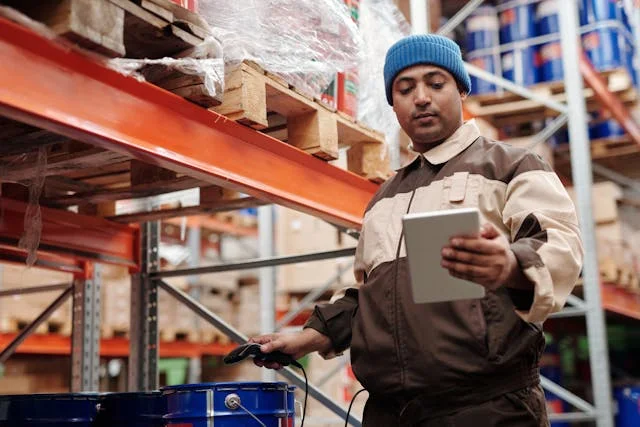
But no matter which model or strategy a business adopts, e-commerce fulfillment has basic standard stages like receiving the goods, storing and labeling them, managing orders, picking and packing items, shipping them out, handling the distribution accordingly, and dealing with returns management including restocking and refund processing.
E-commerce fulfillment differs from regular or traditional fulfillment in very specific ways. For instance, e-commerce fulfillment can ship individual items, while traditional fulfillment only ships in bulk. Filling orders timing is also much faster with the online fulfillment location is very important for delivery time. Most of the time, these centers are now close to the location where the item will be delivered.
The integration of technology services plays an important role in e-commerce fulfillment, and with time every year, we can see better advancements in automated services. Online, inventory management systems keep track of stock levels, they automatically alert businesses when it’s time to reorder products, and they can also alert customers when a product they wanted is back in stock, helping with customer retention and follow-up.

Automated picking and packing systems are amazing at optimizing order fulfillment and making it more speedy, making it possible for products to be shipped out as fast as possible. This level of efficiency is golden for the success of an e-commerce business, as it equals faster shipping times, improved and reduced shipping costs, and increased customer satisfaction.
The e-commerce fulfillment process
As mentioned above, there might be some differences in the e-commerce fulfillment line according to each business need, strategy, and goals in mind. However, there is a constant and all e-commerce fulfillment processes include the following general steps:
1. Receiving
The first stage consists of receiving the goods from the manufacturer and once the inventory is in. Then it is counted, carefully inspected, and also needs to be inventoried, this means checking that the correct quantities were received as well as checking the quality and condition of the items received.

After this, all inventory will need to be properly labeled and categorized so it can later be found and selected during the storage and retrieval from the warehouse stage.
2. Inventory storage
Once the receiving stage is completed, It’s now time to store the goods either for a short or a long term, until a customer chooses them, and they’re placed inside an order. A track of the inventory is kept at this point of the e-commerce fulfillment and will be for the next stages to work smoothly.
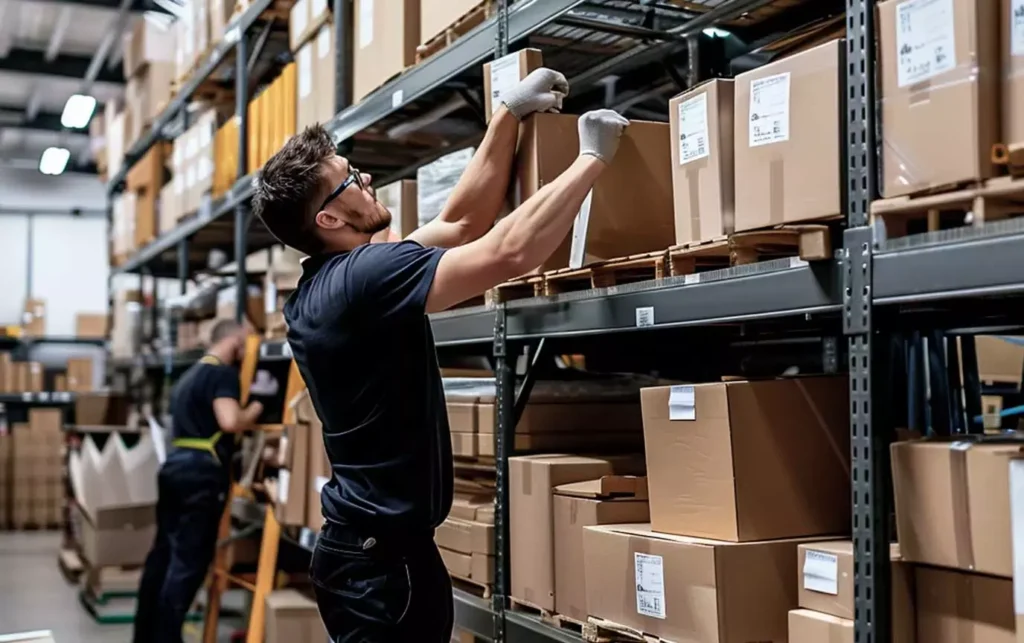
The ideal in this stage is that the business has a constant movement in their inventory and hopefully, according to the best logistics practices, to store the goods temporarily and not overstock or have products that spend too much shelf time.
3. Order processing
This is when the customer places their order, in the e-commerce fulfillment process, this usually is done through the implemented shopping cart or bag. With online or e-commerce shopping increasing and growing at the pace of technology, there are constantly new ways and devices customers can use to check out and place an order. This is something to take into consideration by the merchant during this stage.

4. Picking and Packing
The next step is for the robots or personnel to find and retrieve the items that were placed in the order as well as the packaging that they will be shipped in. Packaging will include barcodes, or trackable scan codes (SKUs) and in some cases return labels.

5. Shipping and Delivery
This e-commerce step consists of sending the goods to their destination, being it a retail buyer or a direct consumer. There are different shipping and carrier options for the fulfillment of this stage and companies often select between freight lines or airlines, and other named carriers such as UPS based on their needs, the goods being shipped, and of course, the cost-effectiveness relationship offered.
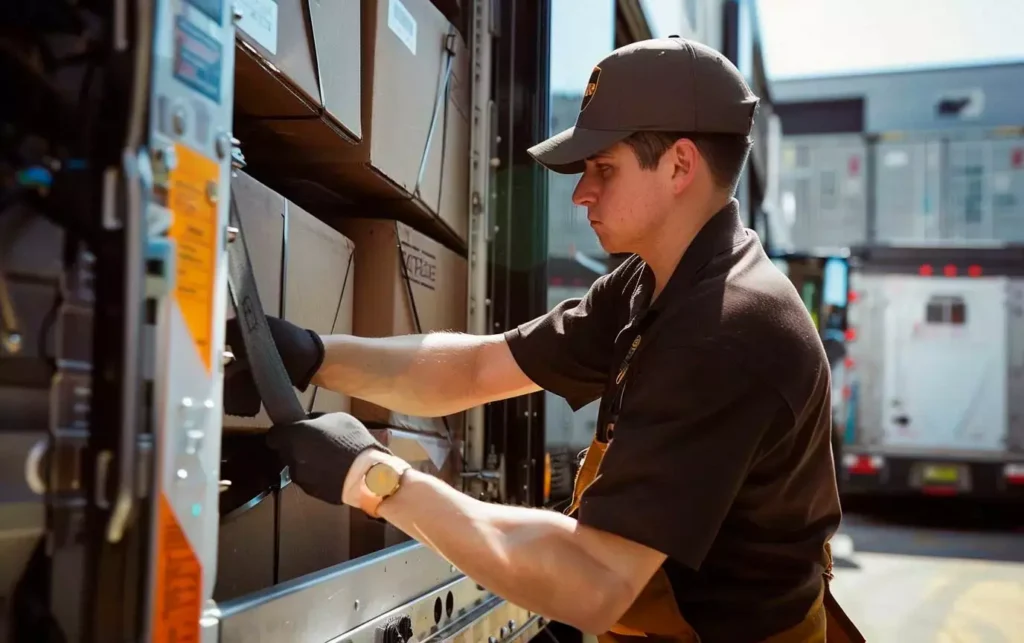
6. Returns processing
This happens when for any reason the customer is unhappy with their order and returns the goods. Once the returned goods are shipped back, the return is then processed according to the policies specified by the company and restocked if that’s the case, other times items might be sent back to the manufacturer.
It is also worth mentioning that the stages need to be kept in mind and consider the product type that is being handled, the volume of the order received, and the location to determine the ability to meet the delivery customer’s expectations.
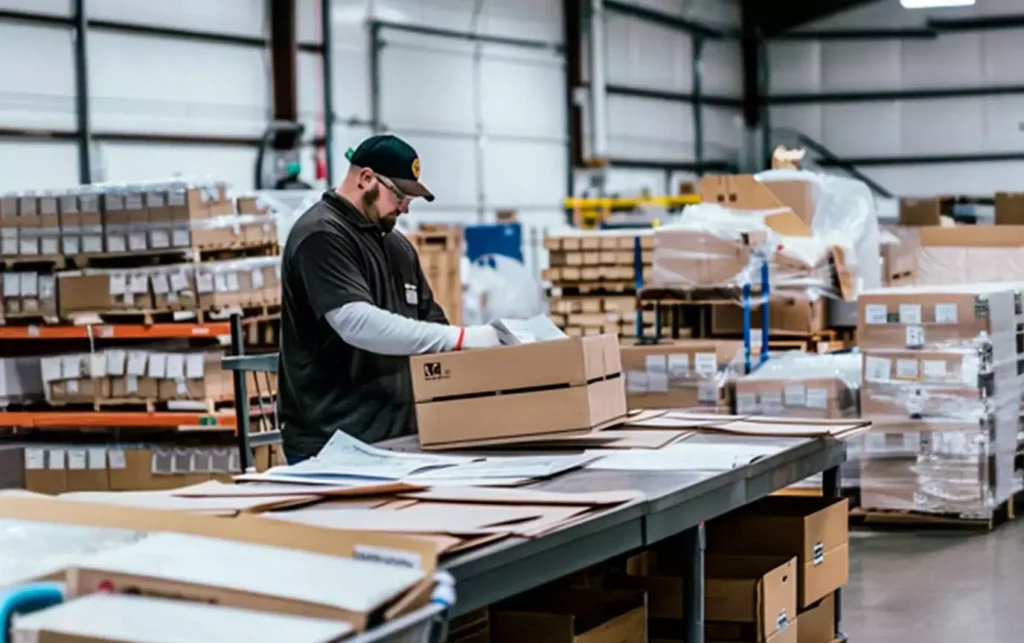
Ecommerce fulfillment challenges
As convenience remains the main priority for customers, and with so many stages and challenges, it is a good practice to hire logistic services that will help you smoothly streamline the whole process from beginning to end.
Customers expect delivery, continuous real-time updates of their order’s status, and to feel confident that they will be able to easily return items when needed. This results in retailers having to find the best way to operate efficiently, at a great speed, and accurately in every step of the e-commerce fulfillment process.
This is why most retailers understand the importance of having a trustworthy and professional Logistics partner like EP Logistics, with expertise in all the e-commerce fulfillment stages.
How to Choose a Fulfillment Strategy
Besides the stages in the E-commerce fulfillment process, different strategies can be adopted as the business sees fit. Here are the most common ones:
In-House Fulfillment
Also known as self-fulfillment, it is when the business chooses to fully manage its e-commerce process internally, they do not outsource any stage to a third-party company. This is usually good for a small business with limited inventory and that is starting up. However, it is hardly a sustainable model for businesses looking to grow and expand.
Dropshipping
This e-commerce fulfillment strategy means that the merchant doesn’t own the goods being sold. Instead, after an order is placed, the merchant forwards it to the manufacturer who is responsible for the fulfillment chain.
Third-Party Logistics (3PL)
Third-party logistics is when the business or merchant hires or outsources an external e-commerce fulfillment provider who manages the whole process for them. In this case, the hired company oversees the whole fulfillment process at every stage and within any chosen modality or strategy by the business.
The benefits of using third-party logistics
There are many benefits to choosing a Third-Party Logistics company to handle your e-commerce fulfillment. One of them is that they typically operate with several fulfillment centers, giving you access to them, and optimizing your process and usually your delivery times.
3PL companies have the expertise and can adapt and rapidly respond to any unexpected situations that might arise.
3PL providers are also able to offer comprehensive and in many cases one-stop solutions in packaging, warehousing, transportation, and of course fulfillment. This is great because they usually offer different managed solutions that go hand in hand with the fulfillment process.
They can also identify and fill the gaps in your supply chain and offer consultation services that offer you insights from a company with experience and professional staff working for you.
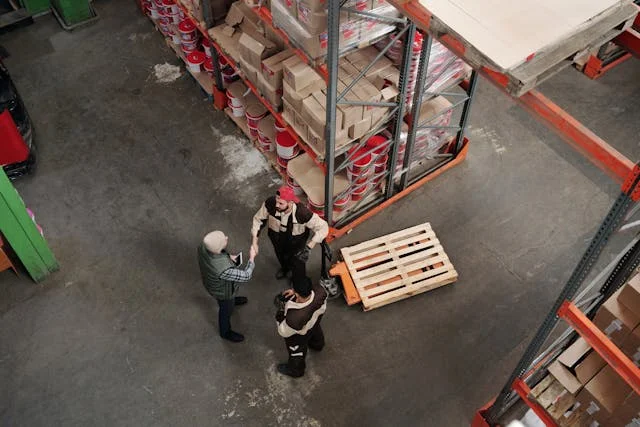
In general, hiring a third-party logistics partner will result in better cost-effective routes, processes, and strategies and the ultimate satisfaction of your consumer by enhancing delivery times and other fulfillment processes like returns. This will leave you with peace of mind to handle other areas of your business while an expert is handling your e-commerce fulfillment.
Conclusion
In conclusion, the growth in e-commerce is transforming how warehouse and distribution centers operate. It’s also transforming businesses and how logistics are handled, opening the door to many possibilities that will translate into productivity benefits for the merchant and a happier and more enjoyable experience for the consumer.
With over 20 years of experience, EP Logistics guarantees to have your back during your E-commerce fulfillment process. We pride ourselves in also offering different consulting services to better assist you in your decision-making, as well as many other Logistic services.
We’re constantly on the lookout for the most efficient practices and keep track of changes, developments, and trends so you don’t have anything to worry about, and your business can stay competitive, and up to date.
Feel free to reach out and speak to one of our experts and find out how easily this process can be handled for you with care and professionalism. Let us be your trusted partner for all your logistic needs, whatever you need, just ask. We offer a wide array of solutions for your business.



